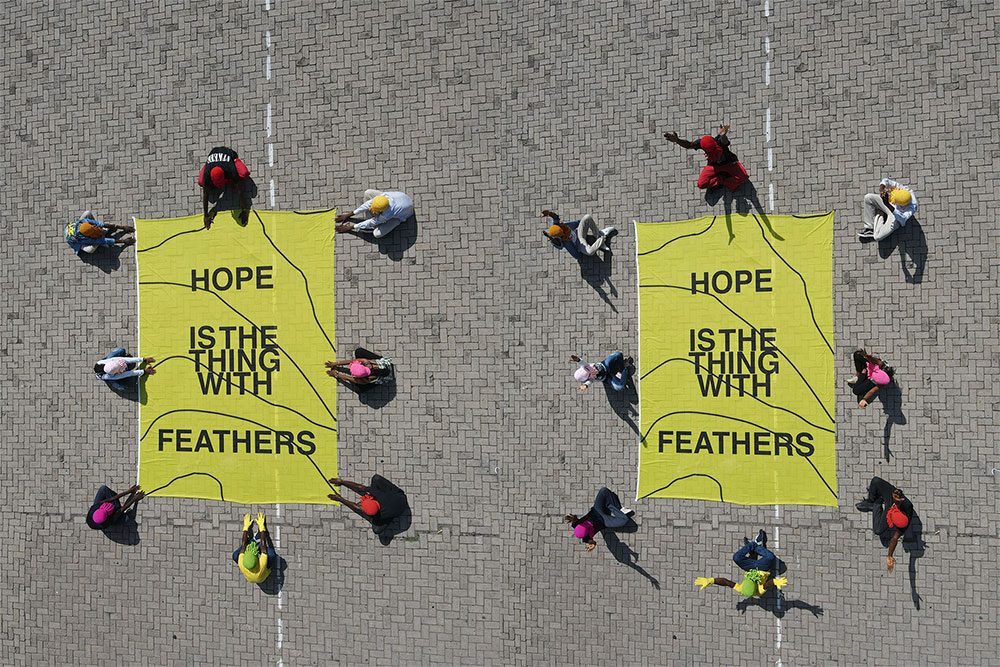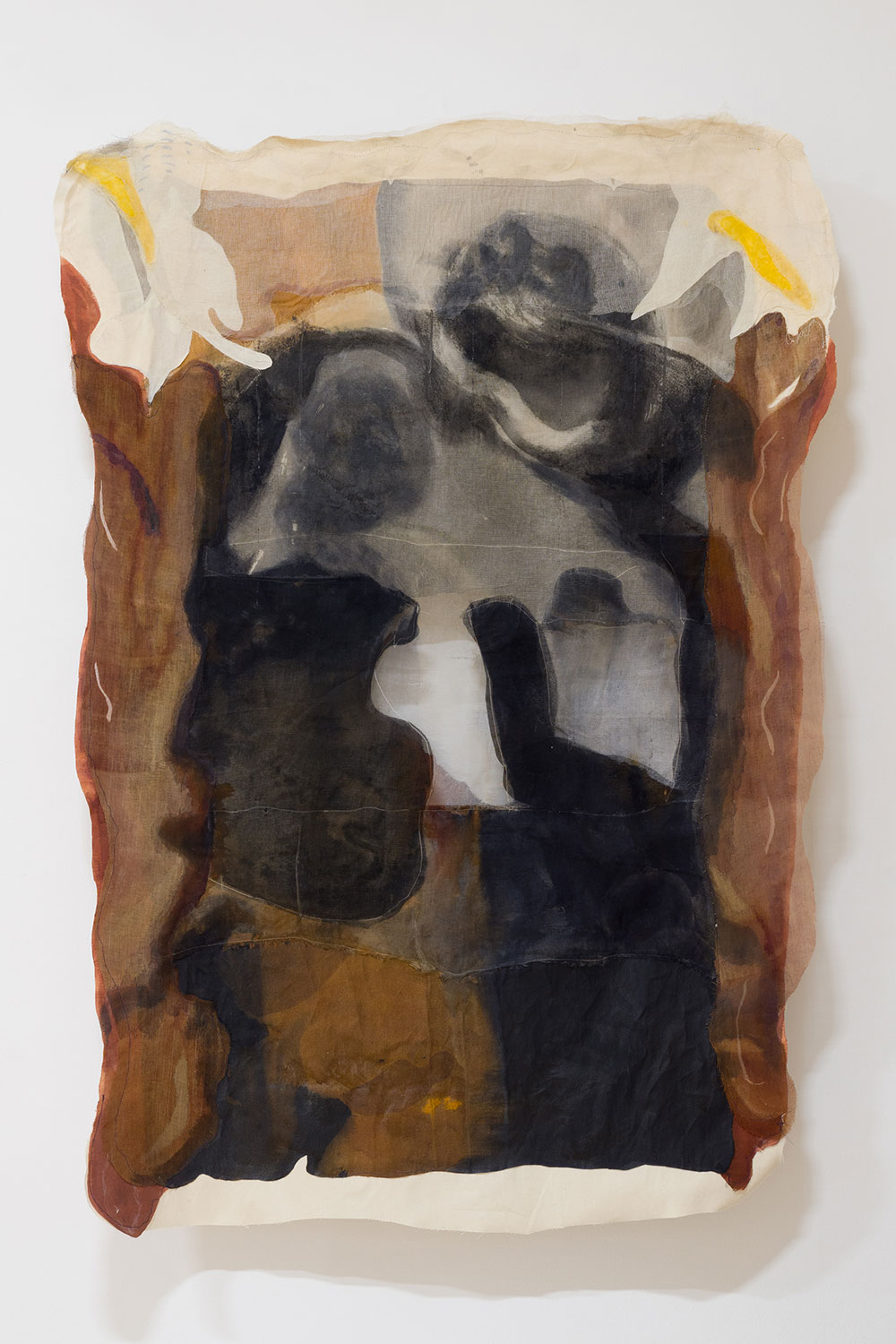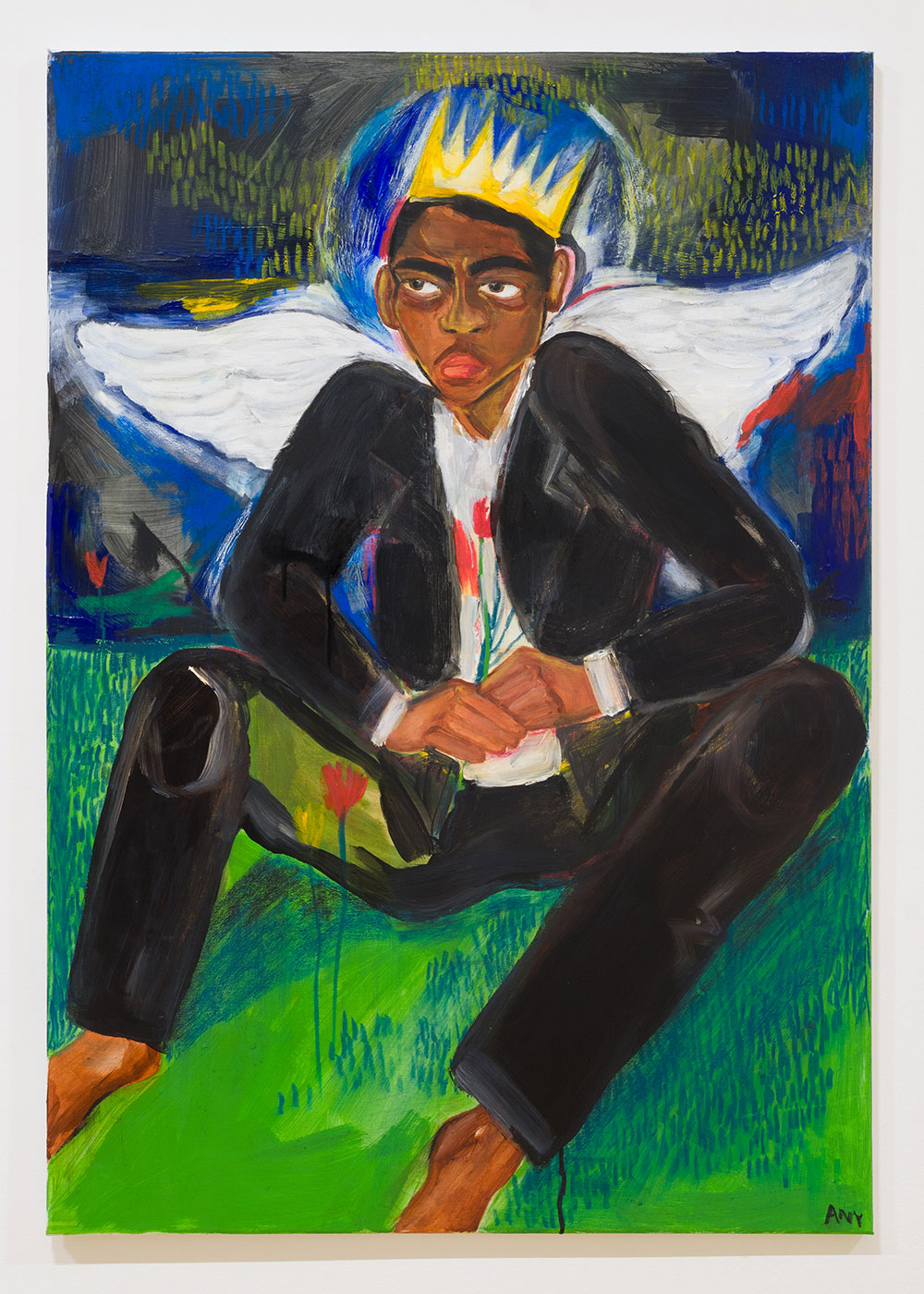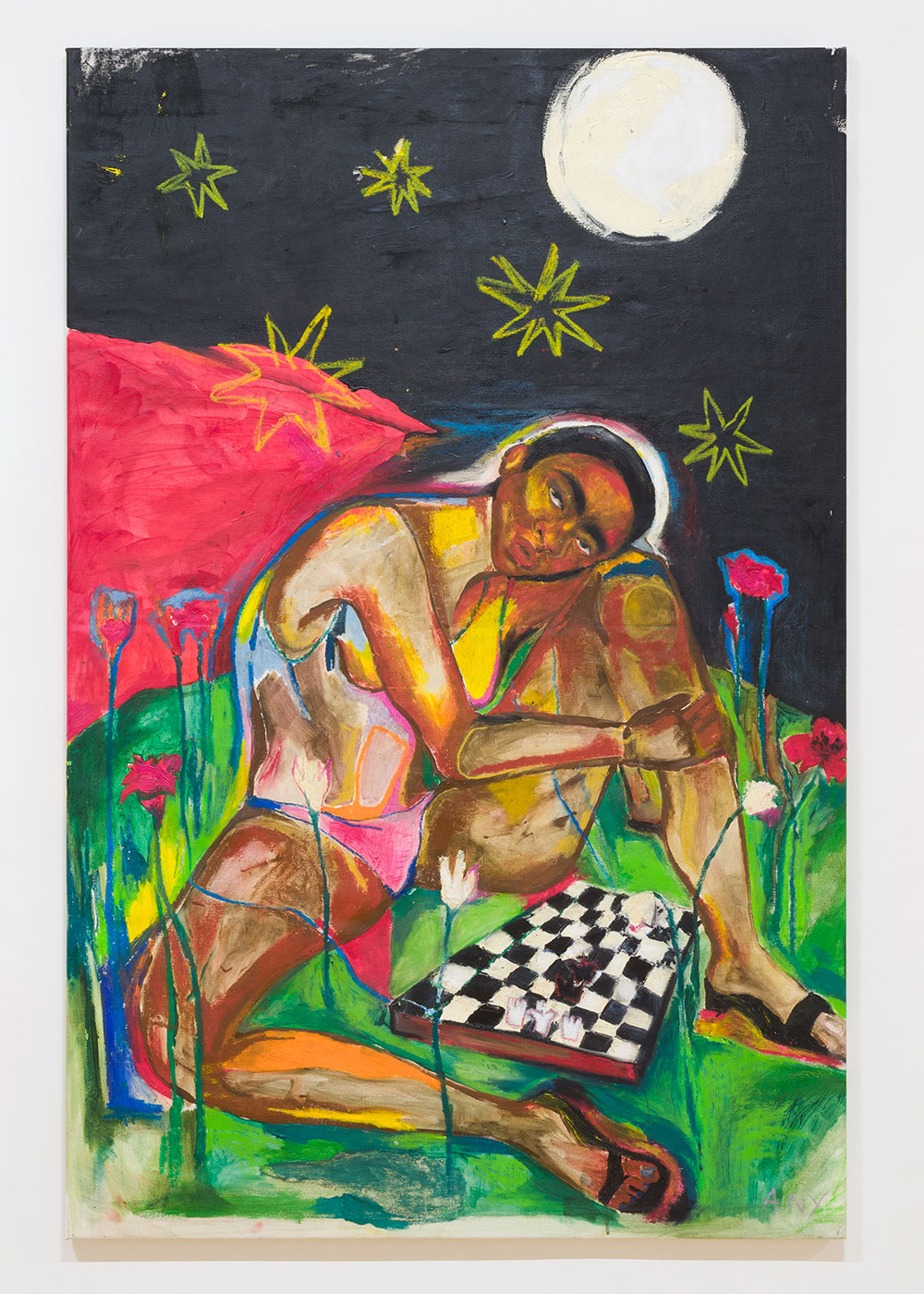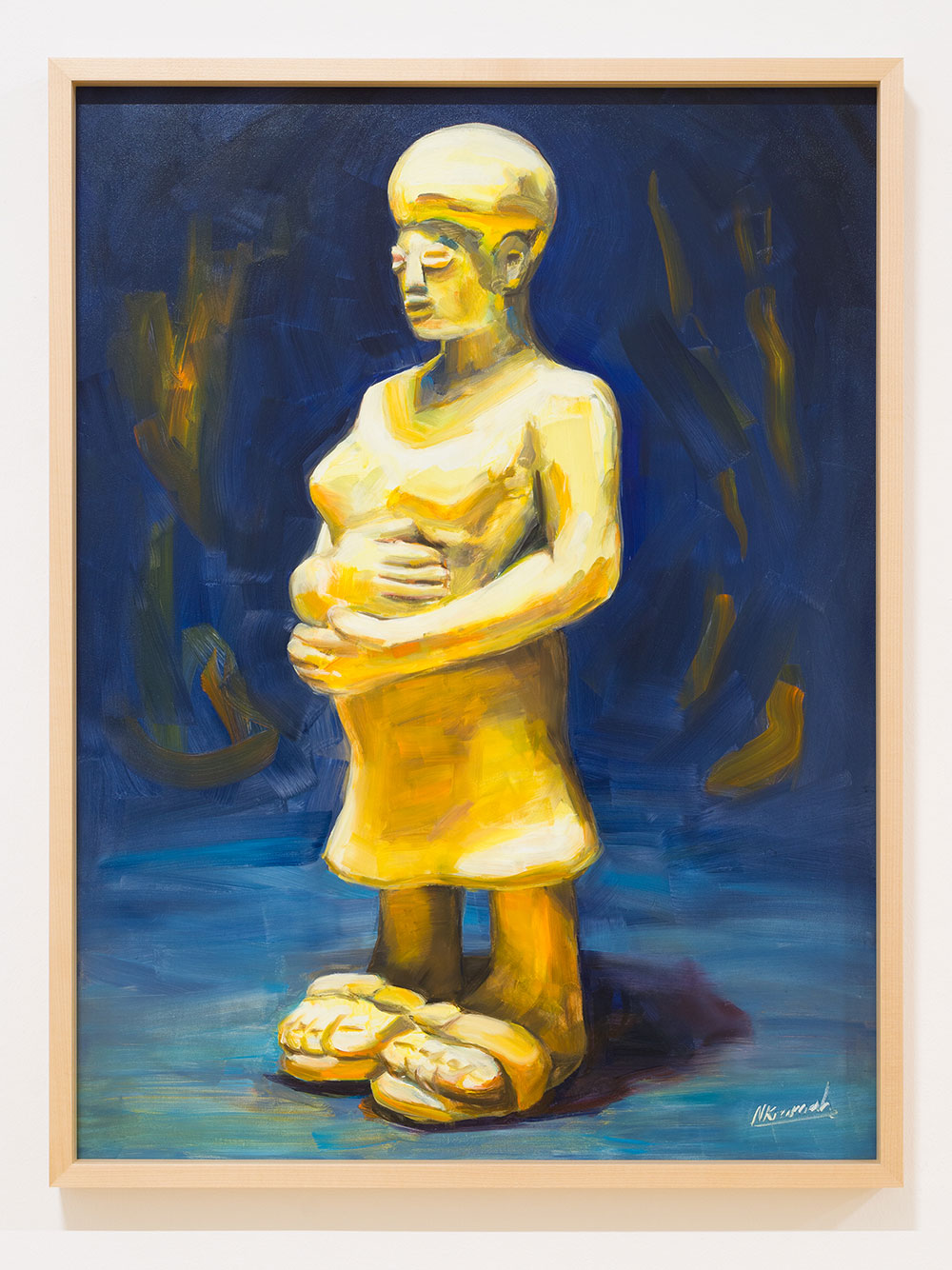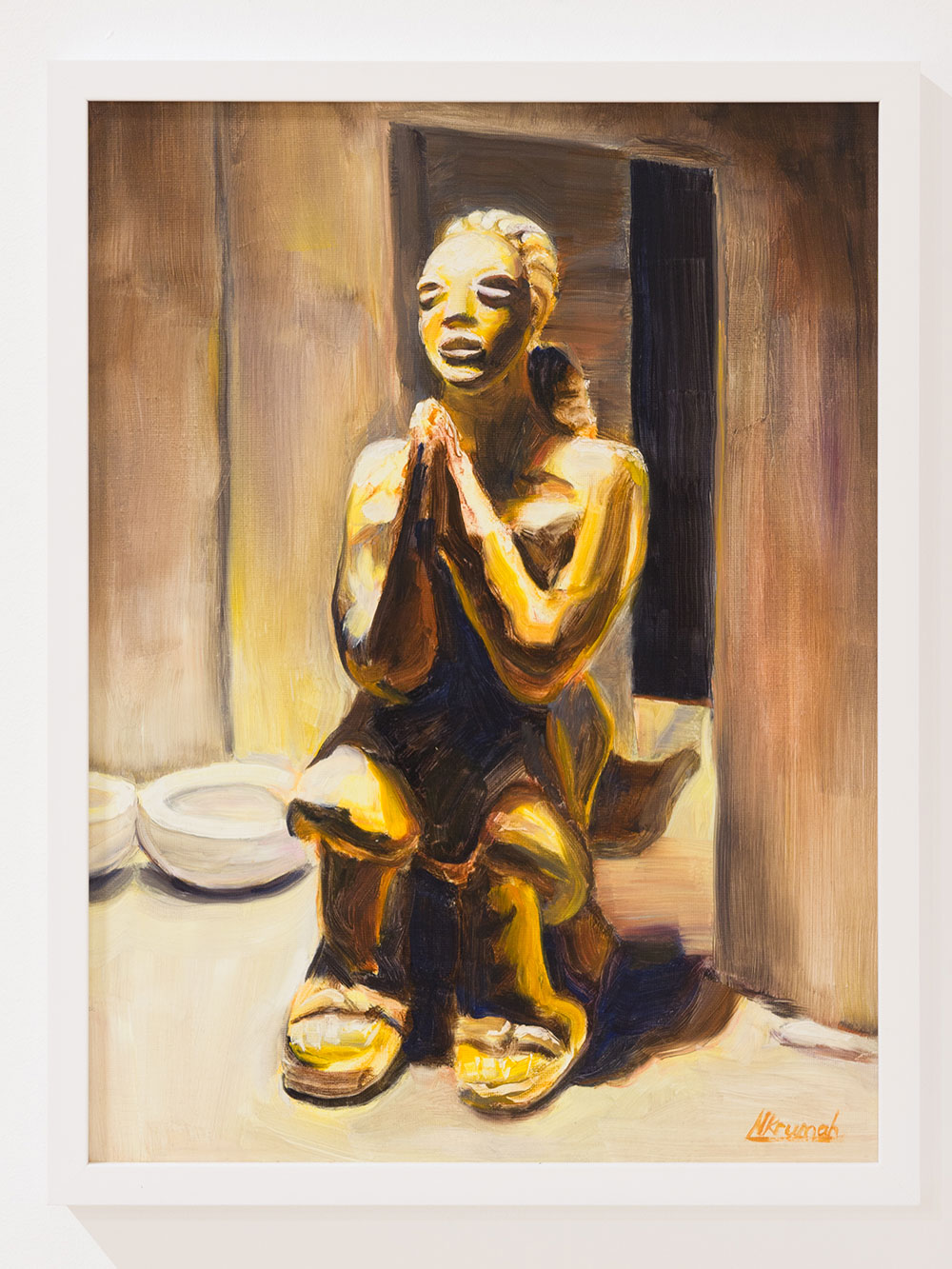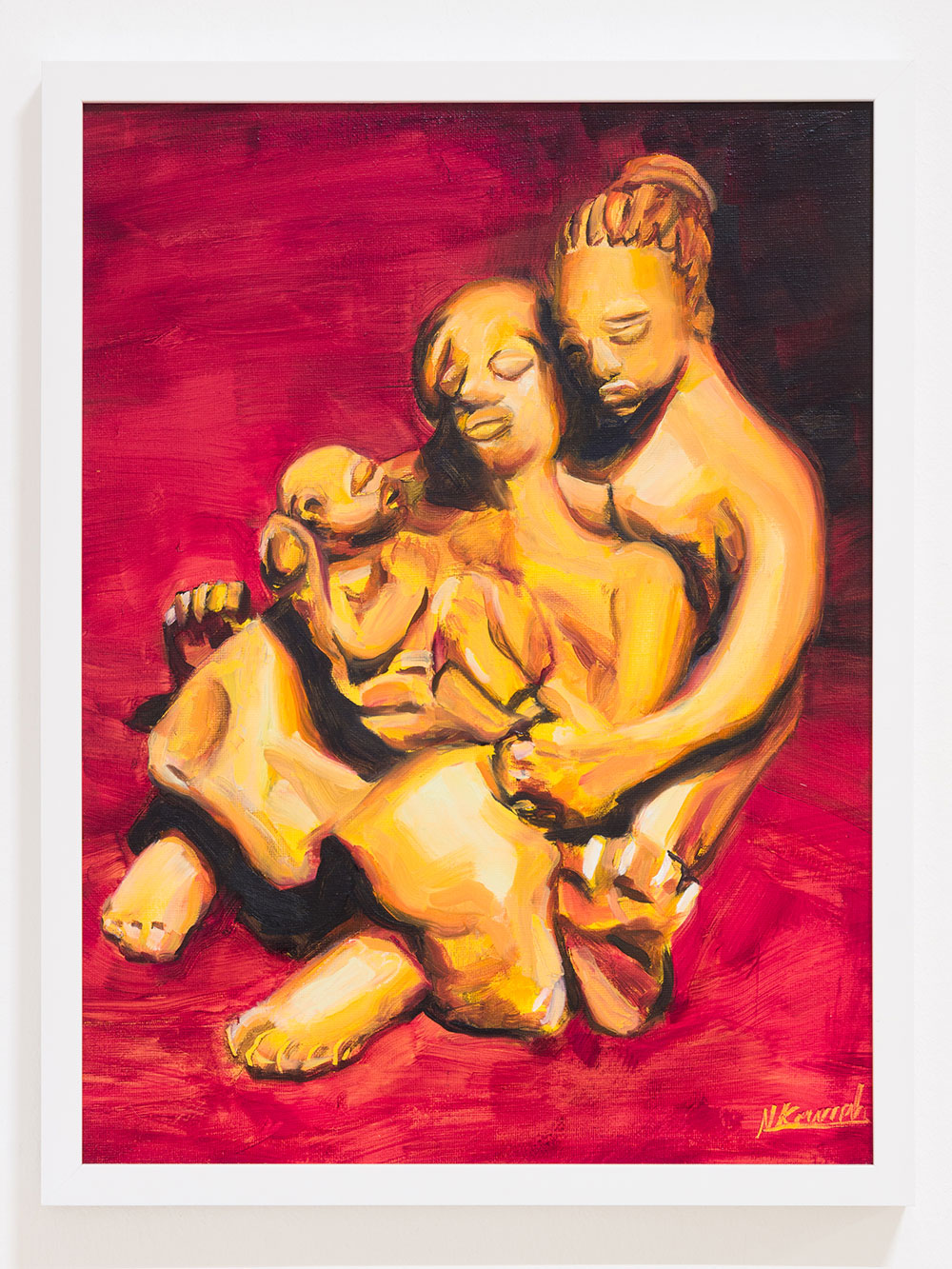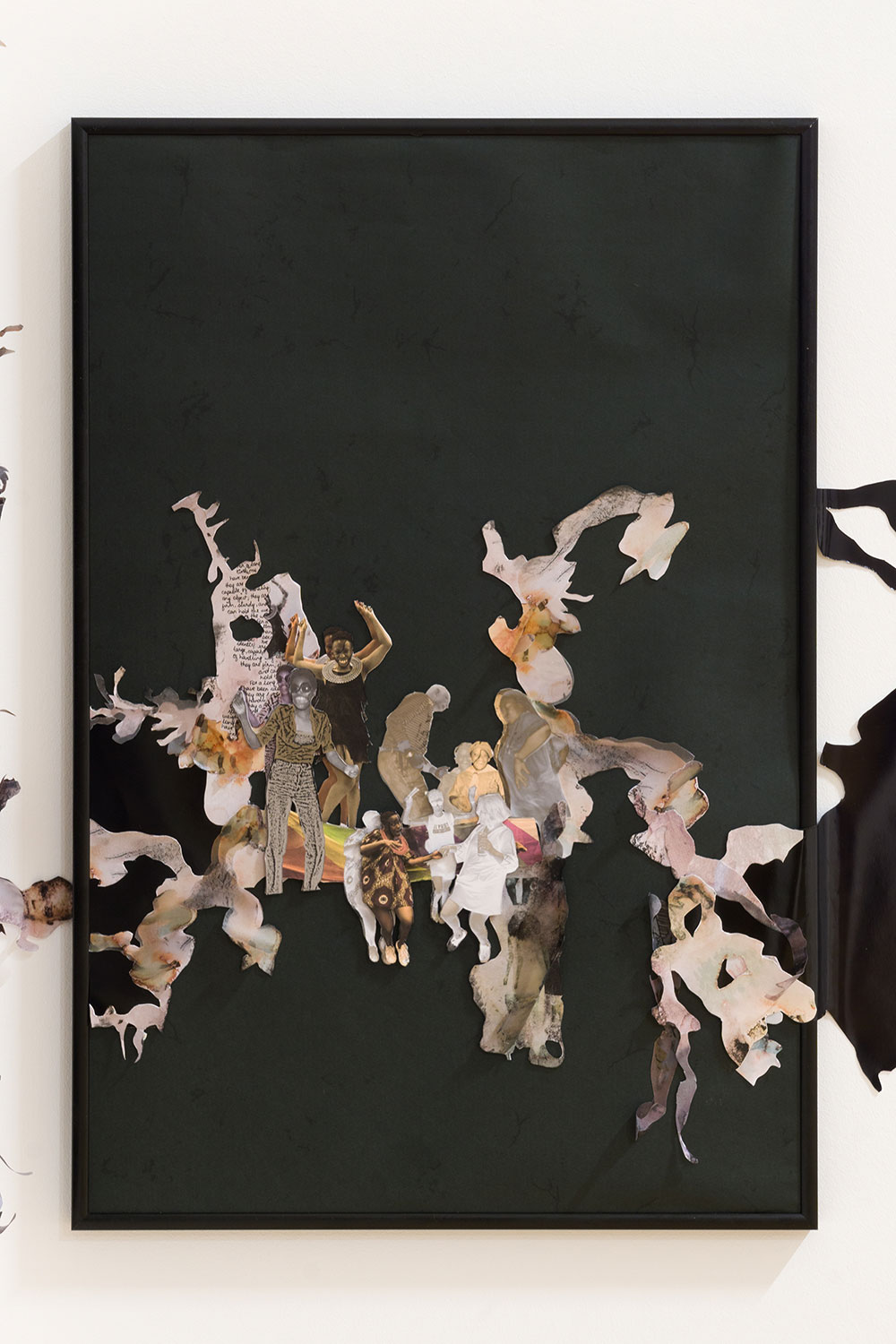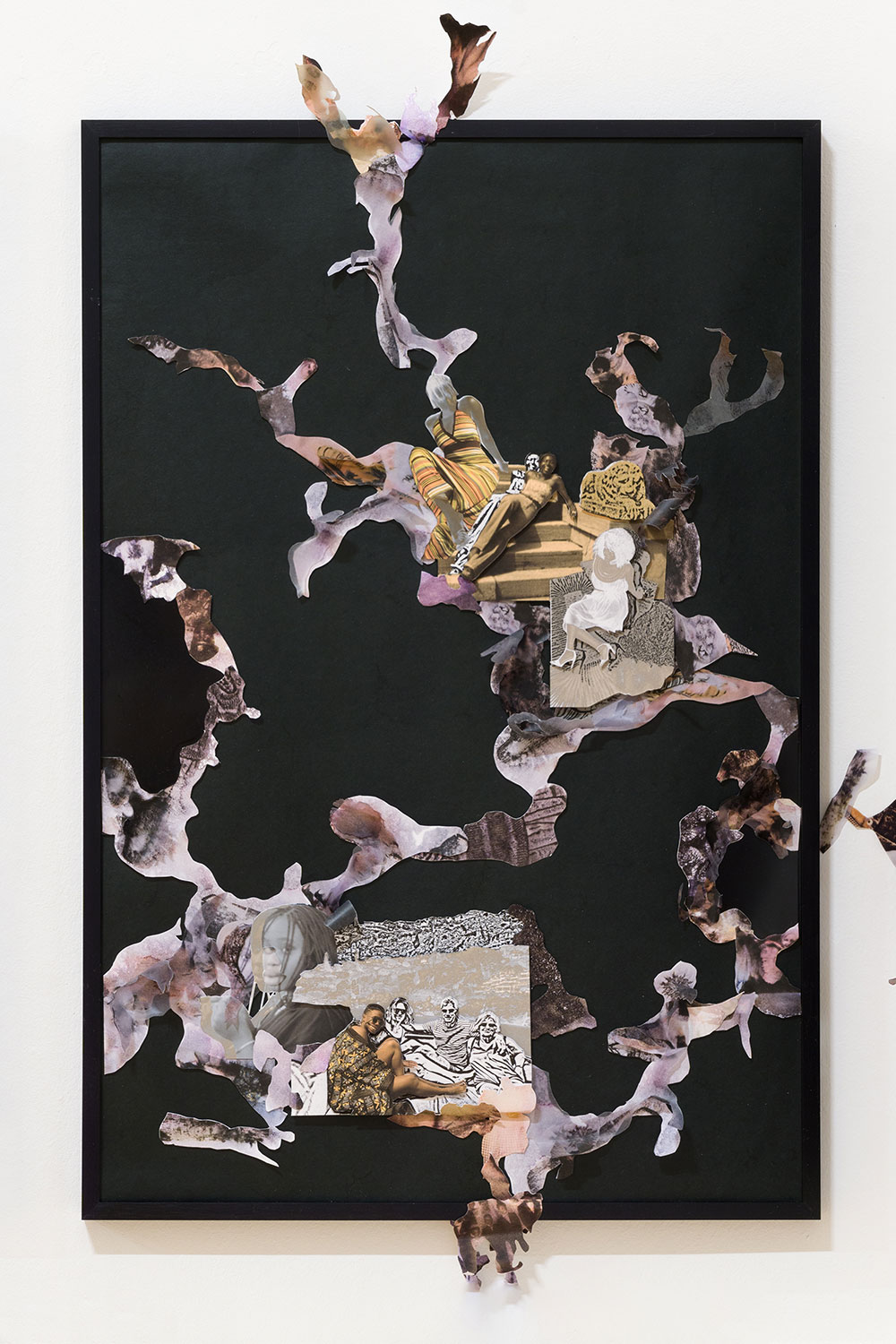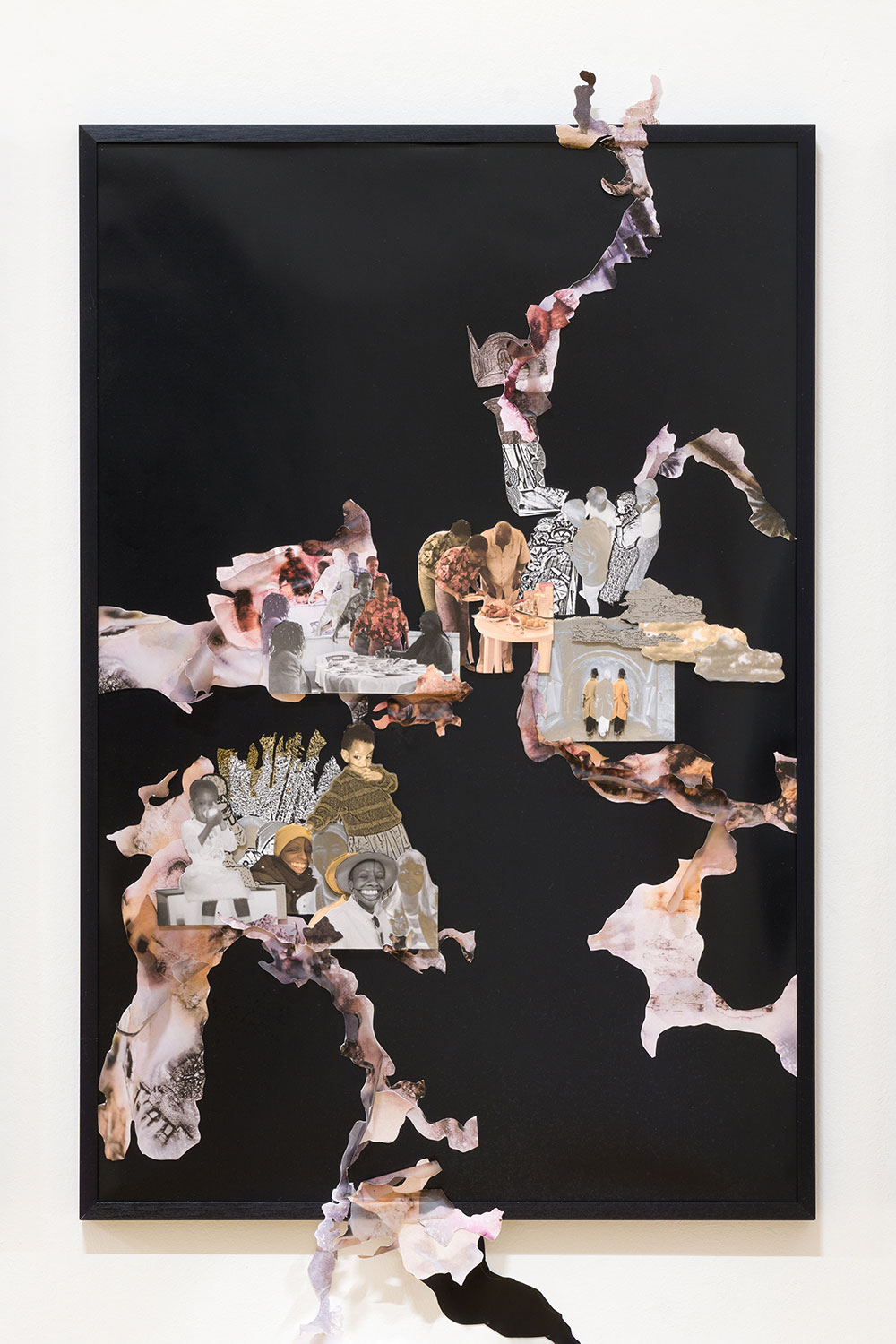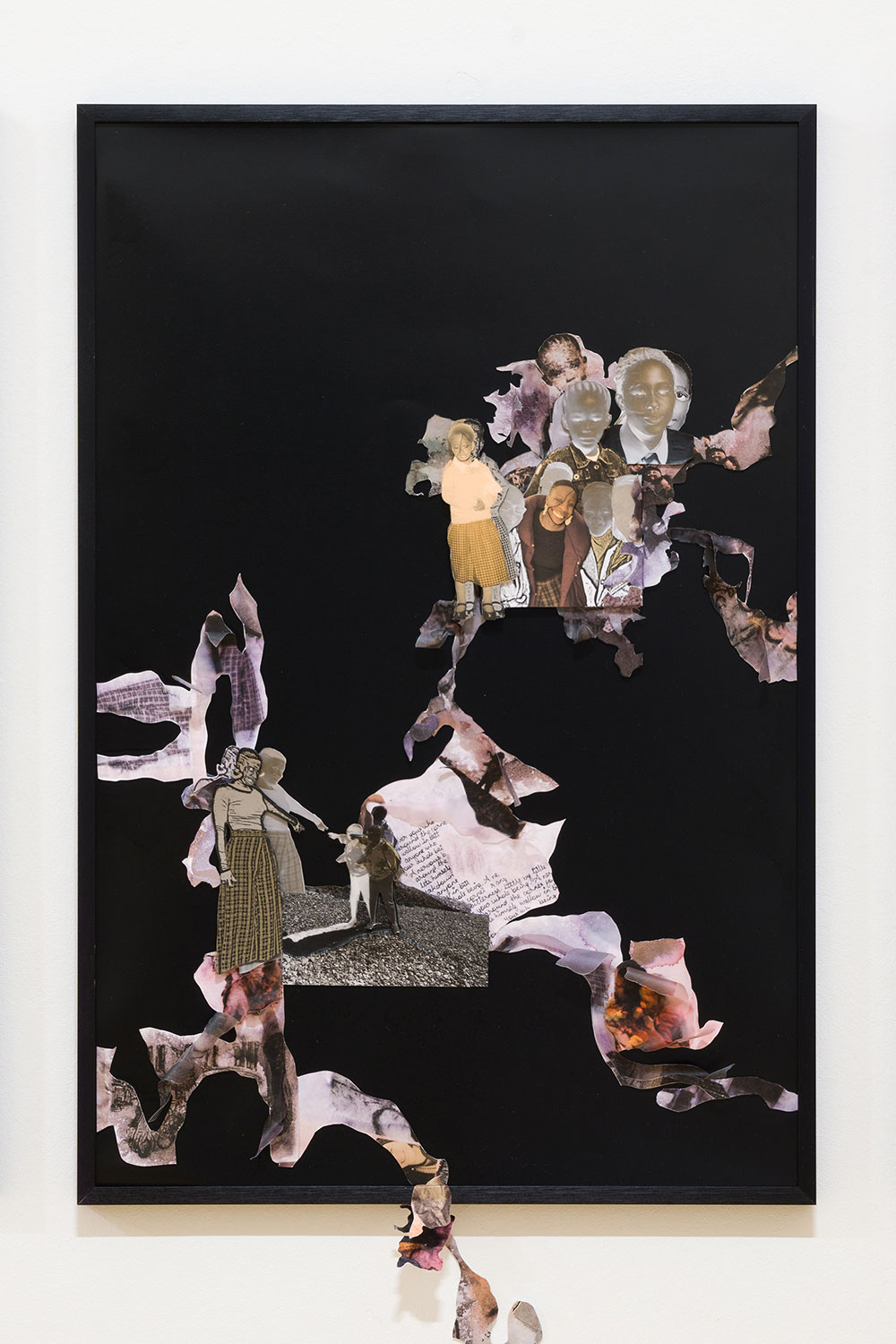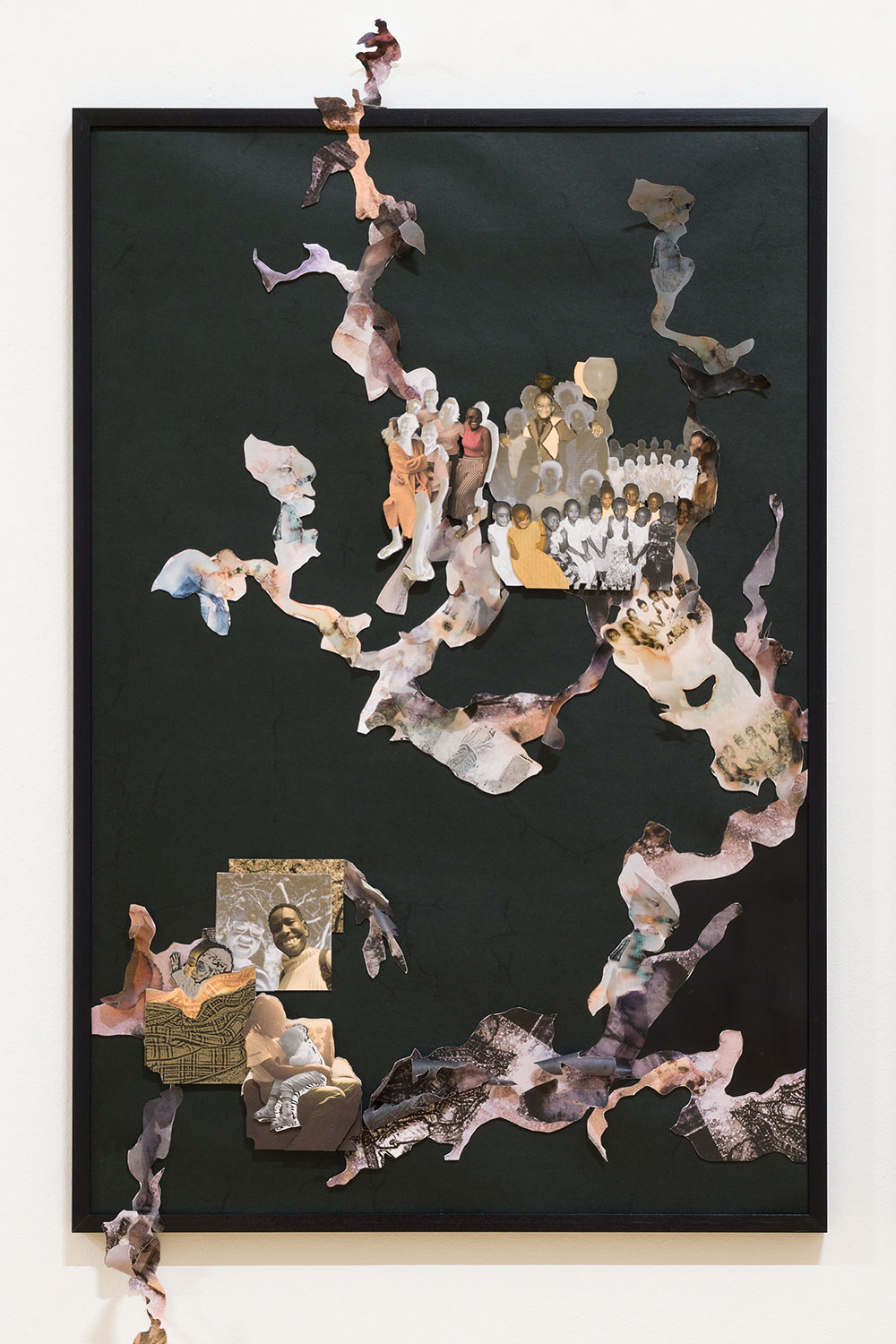The title of the exhibition Hope is the Thing With Feathers borrows from the collaborative work co-created by Larry Bonćhaka and Sopo Kashakashvili (which in turn borrows its title from the 1861 poem by Emily Dickinson). Their practice together and individually aims to foster communion, the regard of self and other, in both public and private space, and to nurture relationships in and through acts of resistance and congregation. This has since evolved into the ongoing public art project Opened Flags.
The curatorial concept is inspired by the many artists, including the six who are part of this exhibition, whose work has influenced our creative approach over the past years. Artists at different stages of their practice, many of whom actively invest their time to build through social practice and alongside other artists, continually inviting their communities, close and afar, into both private and public spaces to share experiences, discuss topics that are curious and important to them, and at times daring to broach ones that are challenging to speak on in public.
In thinking about hope (as a thing with feathers), we imagine the prompts to pause and/or take action that “hope” may evoke. We begin with a yellow hued entrance, opening up into a beaming glow that envelopes the entire entryway to the space, emanating from the work "Hope is the Thing With Feathers" by Bon´haka and Kashakashvili. Across from its towering height (at 4,5 meters), is a double image that shows this work in its intended state, outdoors and in motion as part of a public performance, in this case at the Royal Parade Grounds in Kumasi, Ghana.
From this front room, the work of Niquu Eyeta peaks out gently, inviting way into its subtly layered and textured textile collaging with natural mineral and plant pigments and an installation of various natural objects such as fired clay, pistachio shells, or frankincense. The installation and the two textile works "Shadow’s Compost" and "Countless Others" explore the connection between body, landscape, and memory. The textiles are dyed and painted with natural pigments and layered through slow processes of cutting and building up layer by layer. They carry the traces of forms emerging and dissolving, between presence and disappearance. The earth tones, irregular edges, and colors that flow into one another echo ecological processes of decay, composting, and regeneration; cycles that speak to life's continuity. The blur in the works is an invitation to stay in the in-between, the layers and folds of fabrics and forms.
Next are two bodies of work that in very different modalities explore the layered and intertwined constellation of familial and relational becoming. The oil paintings by Nando Nkrumah are depictions of family and faith, drawing from the artist’s Ghanian great-grandmother’s decision to take on the responsibility of raising her grandchildren when Nkrumah’s grandmother died giving birth to his aunt. A decision she made in the deep hopes that this would and indeed did shape the futures of the generations of children and grandchildren to come. Sustained by deep faith, spirituality, and unconditional love, this decision would become a formative foundation of the family’s history and while simultaneously pointing to the transformative force of will, faith, and care, cultivating a strong sense of self across generations.
Beside sits "Chini Ya Maji" (Swahili for 'underwater' and Sheng for 'what lies beneath the surface'), a sprawling paper, gravel and rope installation by Jordan Rita Seruya Awori (JRSA) accompanied by the sound piece "Uneasy ... meditations ... sibling a letter", which consists of the artist reading passages from So Long a Letter by Mariama Bâ. These sounded excerpts about deep personal loss and hopes of renewal appear both in the sound piece and within the collages themselves, resonating with JRSA's own understanding of hope as something that must be actively excavated and tended. The full installation offers up a kind of collapsing of time into itself, wherein what has come before reflects in what is and what we imagine could be. JRSA uncovered stacks of family photo albums, in which she found images of her mother in her earlier years living in the U.S. and the artist reflects on and begins to unveil eerie similarities in her own experience of moving to Germany and encountering herself in a new environment. In this work, the artist discusses vulnerability in reencountering oneself but also the vulnerability and sometimes outright discomfort we may feel encountering each other.
In the work of Aniela Idehen, an artist whose creative practice feeds from and into her activism work, the artist draws on radical Black thought from the Black Panther movement to Pan Africanist philosophies. The paintings "Checkmate for Borders" and "Where Sasa Meets Zamani" encompass the different elements and inquiries in the other positions. In the first painting, depicting a sitting woman gazing directly back at the viewers in front of a played chess board, the artist unabashedly uses the symbolism of the game of chess as well as the colors of the Pan-African flag, which at the same time evoke Palestine and Sudan. The second references the African philosopher John Mbiti and specificially the concept of Sasa and Zamani, where Sasa are spirits known by someone still alive while Zamani are spirits not known by anyone currently alive (representing micro time and macro time, respectively).
As with other feathered phenomena, we might imagine, a feathered hope may take flight but eventually it too must return down to earth, to feed, to sew seeds, to nest. As with the static flag in the front room, the viewer’s movements are slowed, to a halt per chance, and it is in this slowing down that a quieted state may hold, and reflections may occur on what precedes us, what remains hidden in our midst, and how safe we need to be to allow ourselves to be vulnerable enough to hope on until this hope becomes a consequential action and stand.

